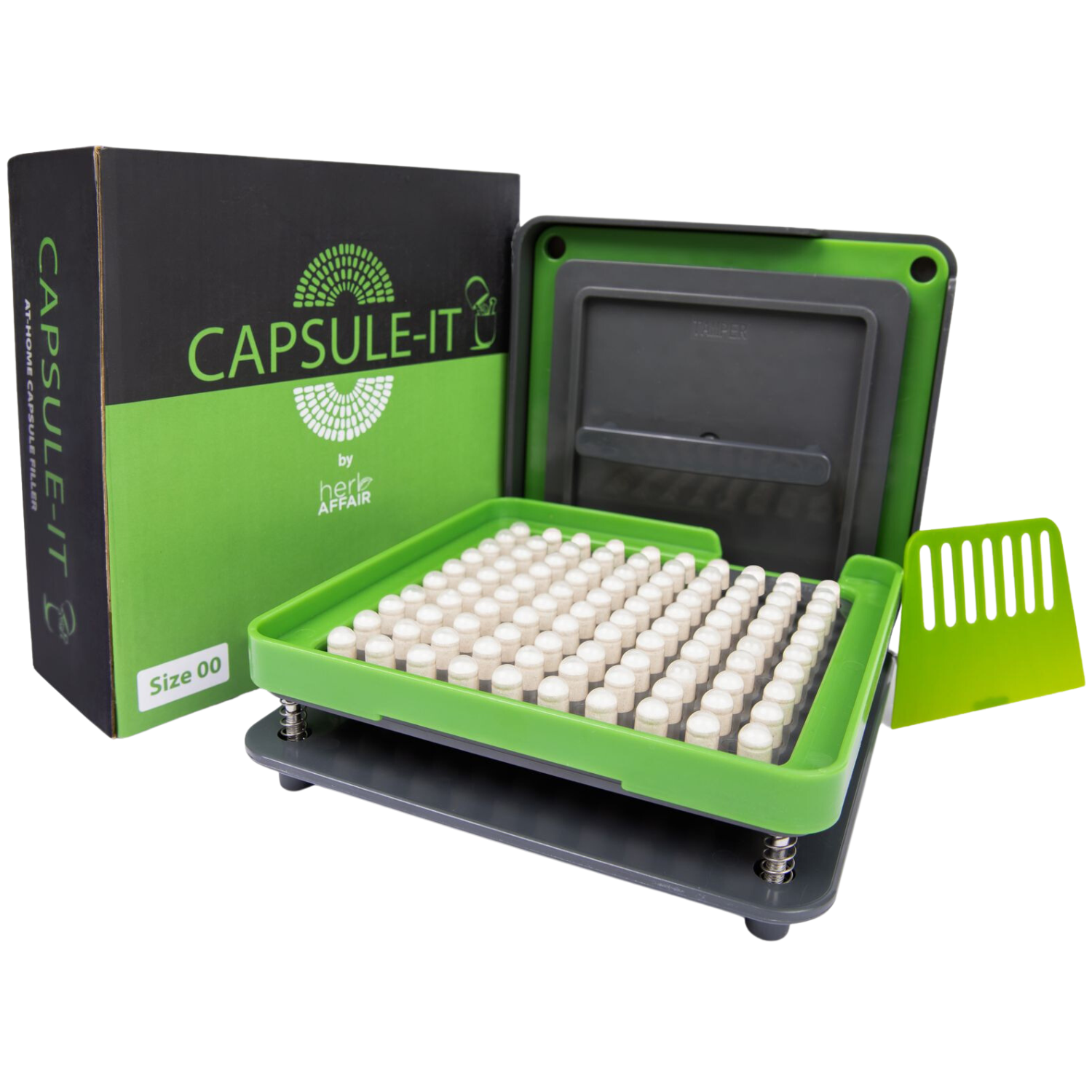To some extent, you know making your own supplements will help you:
- Ensure you have the right amount of the key ingredients
- Steer clear of health-harming additives and contaminants
- Save money in the long run (because, yes, supplement companies are not only lying to you but also overcharging you)
But the moment you start seriously looking into the whole process of it?
Yeah. That’s when most people (understandably) go, “Ah, it’s too complicated. There’s just too much to think about, do, and buy. I’ll just stick with OTC supplements.”
Luckily, you don’t have to be “most people”.
This article breaks the process down step-by-step, guiding you through selecting active ingredients to the specific tools you need and everything in between — making DIY-ing so absurdly straightforward you’ll never want to step foot in a health supplements store again.
Table of Contents
- Are OTC Supplements Really That Bad?
- What Do You Need to Make Your Own Supplements?
- High Quality Active Ingredients
- Manual Capsule Filling Machine
- Empty Capsules
- Additional Accessories (Not Required)
Are OTC Supplements Really That Bad?
Chances are, like most consumers, you shell out money on ride-hailing, on-demand house cleaning, and food delivery services without a second thought.
So, if you don't mind paying more for convenience, why should things be different with OTC health supplements? Sure, you know there's always the risk of inefficacy alongside dangerous additives and contaminants — but just how widespread are these issues?
Or, in other words, how likely are you to be affected? Very. Here’s proof:
Contamination
- A 2012 study published in PLOS ONE found that 5% of 121 supplements contained arsenic amounts that surpassed the safe daily consumption limit. Additionally, 2% had excess lead, cadmium, and aluminum; and 1% had too much mercury. Heavy metal poisoning can cause irreversible symptoms like brain damage, plus kidney and liver failure.
- A 2018 quality improvement study published in JAMA Network Open found that although the FDA had identified 746 supplements adulterated with unapproved, active pharmaceuticals (e.g., sibutramine, which increases the risk of cardiac arrest even in individuals without pre-existing cardiovascular disease) between 2007 and 2016, the majority of them remained available for purchase at the time of the study.
Mislabeling
- A 2022 study published in JAMA Network Open found that 17 out of 30 immune supplement products sold on Amazon had inaccurate labels. More specifically, 13 of these 17 were missing between one and six active labeled ingredients.
- A 2023 labeling analysis of 199 commercially sold multivitamins on Amazon published in Nutrients found that the majority contained vitamin D3 levels that were either too low or too high, while no supplement contained vitamin D2 (contrary to their claims).
Yes. As we said, it's very bad. Meaning? Even if saving dollars isn’t your priority, you should still make your own supplements — for your health's sake. This brings us to …
What Do You Need to Make Your Own Supplements?
There are three main things that everyone needs when it comes to filling capsules at home. You'll need the powdered version of your ingredient (and selecting a high quality one is crucial), a capsule filler and empty capsules. We'll cover each of these in the coming sections, plus a couple optional pieces that will make your life easier.
#1: High-Quality Active Ingredients
Zone in on your desired health effect
A simple way of thinking about this is: what would you like your supplement to help you with?
For example, if you seek natural stress relief, active ingredients to consider range from magnesium to ashwagandha to vitamin D.
Verify its efficacy
Just because an ingredient is commonly found in a supplement that claims to do ‘X’ doesn’t mean it’s truly effective.
A good example? Just look at branched-chain amino acids (BCAAs). Despite the hype, a 2021 review published in the International Journal of Nutrition and Exercise Metabolism concluded BCAA supplementation does not enhance muscle strength or growth when protein requirements are met.
To judge a study’s credibility, look at:
- Hierarchy of evidence: Meta-analyses > Randomized Controlled Trials > Controlled trials > Observational studies > Expert opinion
- Publication quality: Is it a reputable journal?
- Funding source: Avoid financial conflicts of interest
Pick the right source
- Is it USDA-certified organic?
- Is there transparency in sourcing and production?
- Does the brand provide third-party lab testing results?
#2: Manual Capsule Filling Machine
Why use a capsule filling machine?
- It's safer and more convenient than swallowing raw powder
- Avoids unpleasant taste and potential choking hazards
Manual vs. Tablet Pressing Machine
- Tablet machines are expensive and time-consuming
- Manual capsule fillers are affordable and efficient
- Example: CAPSULE-IT makes 100 capsules at once for under $50
- Tablets made at home lack coatings — bad taste guaranteed
How to choose the right capsule filler
- Durable material (ABS plastic or acrylic)
- Easy to assemble, clean, and use
- Match capsule size (e.g., size 00)
- Choose your desired capacity (30, 50, or 100 capsules)
- Don’t always go for the cheapest option
#3: Empty Capsules
What size capsule should I choose?
This depends on your ingredient and desired dose. Approximate fill weights (based on 0.70 density):
- 000: 960 mg / 0.28 tsp
- 00: 665 mg / 0.18 tsp
- 0: 475 mg / 0.14 tsp
- 1: 350 mg / 0.10 tsp
- 2: 260 mg / 0.07 tsp
- 3: 210 mg / 0.05 tsp
- 4: 145 mg / 0.04 tsp
- 5: 90 mg / 0.03 tsp
Using a filler
If your dose is too small, add a safe filler like ground cooked rice. Avoid raw cornstarch or flour — they may contain harmful bacteria.
Other factors to consider
- Material: Gelatin (animal-derived) or Vegetarian (plant-based cellulose)
- Testing and safety: Organic certification, third-party testing
- Color coding: Helpful when making multiple formulas
Additional Accessories (Not Required)
Optional tools to simplify your DIY process:
- Digital kitchen scale – accurate dosing
- Dropper – for liquid actives like omega-3 or MCT oil
- Blender – grind or mix your ingredients evenly
Bottom Line? You Can DIY Your Supplements Without the Headache
Suddenly, the prospect of making your own supplements doesn't seem that daunting or complicated, right?
- Step 1: Secure active ingredients
- Step 2: Get a capsule filling machine
- Step 3: Buy your capsules
Boom. Enjoy your new safe, effective supplements.
Sounds good. But what if you want to go beyond the basics and recreate the exact formulas of the health supplements you’re already taking — but without all the harmful stuff?
That's a whole bunch of active ingredients you need to account for. And worse, everything will have different densities. So how will you calculate each ingredient's weight, and more importantly, how will you fit them all within a single capsule?
Bad news? You won't find that information in this article. Good news? We cover it in detail in our Do-It-Yourself Supplement Guide for Beginners. So, grab a copy and dig in; you can officially say goodbye to paying for OTC health supplements. Forever.








